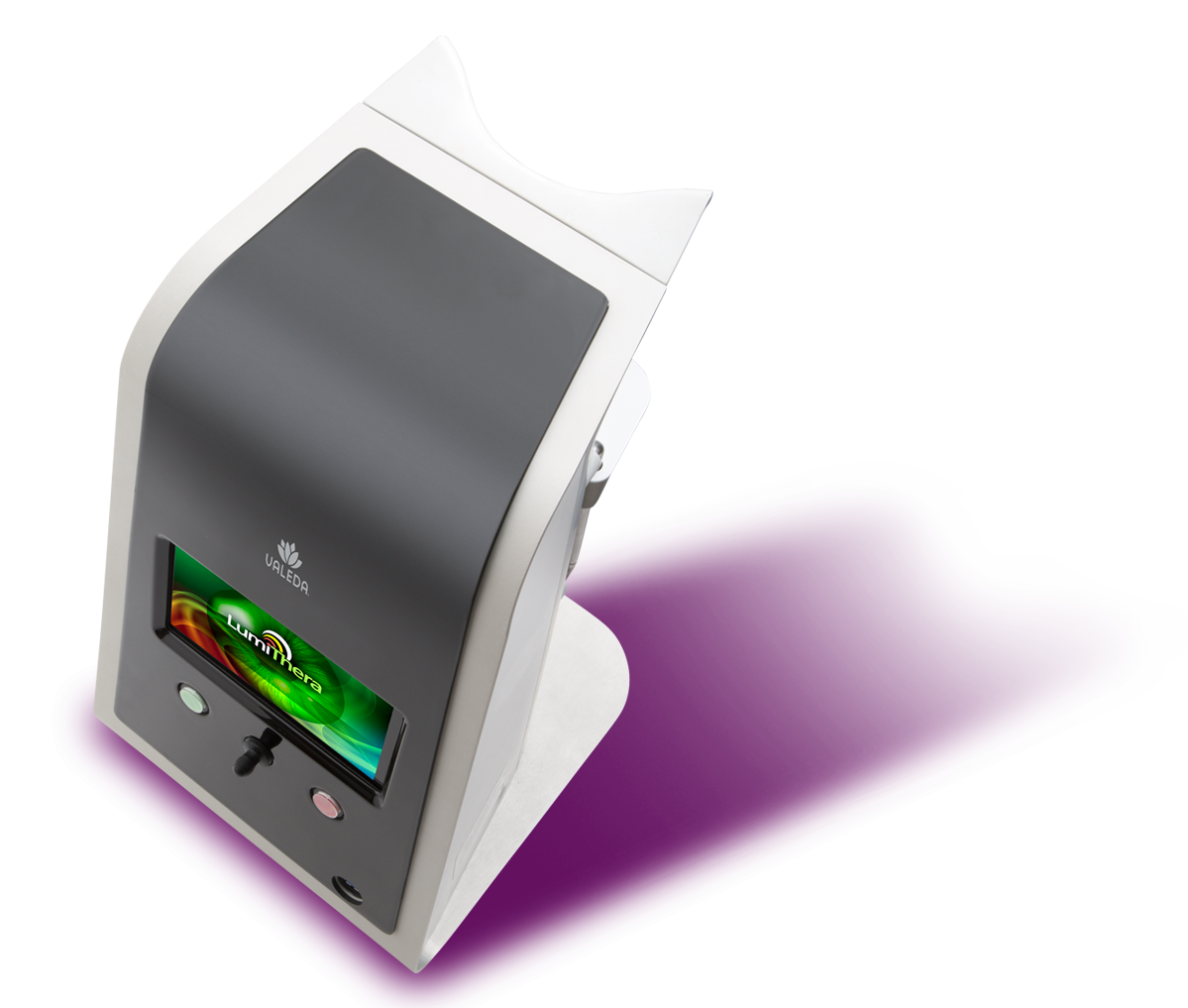How Valeda Works

Valeda uses light-emitting diodes (LEDs) to stimulate cellular function, leading to improved energy production within the mitochondria.
Valeda delivers wavelengths of 590, 660, and 850 nm. In the scientific literature, these wavelengths address independent cellular mechanisms important in age-related macular degeneration (AMD).
Both the 660 and 850 nm wavelengths were chosen based on their known interaction with cellular photoacceptors in cytochrome c oxidase (CcO). The 660 and 850 nm wavelengths promote electron transfer and oxygen binding, respectively, in CcO leading to restoration of mitochondria function and increases in metabolic activity (i.e., energy production), and inhibition in inflammatory events and cell death.
The 590 nm wavelength increases the signaling protein nitric oxide which reduces oxidated stress mediated injury in the cell and increases O2 delivery.
- Wavelength 8501
Drives electron transfer (CUA) stimulates metababolic activity (ATP) and inhibits inflammation and cell death
- Wavelength 6601
Promotes O2 binding (CUB), stimulates metababolic activity (ATP) and inhibits inflammation and cell death
- Wavelength 5902
Increases nitric oxide synthesis and vasodilation which can improve local oxygenation and nutrient delivery
2. Ball KA, et al. J Photochem Photobiol B Biol, 2012; 102: 182-91.
Valeda In Clinical Practice
Valeda is a medical device designed for ease of use in the clinician’s office

Treatments are delivered in a series of 9 sessions per eye over a three-five week period.
Valeda is the only PBM device to be granted CE Mark Certification for medical claims associated with the treatment of ocular diseases and disorders including dry age-related macular degeneration.
Valeda is FDA Authorized in the United States.
Indications for Use: The indicated use is for treatment of ocular damage and disease using photobiomodulation, including inhibition of inflammatory mediators, edema or drusen deposition, improvement of wound healing following ocular trauma or surgery, and increase in visual acuity and contrast sensitivity in patients with degenerative diseases such as dry age-related macular degeneration.




